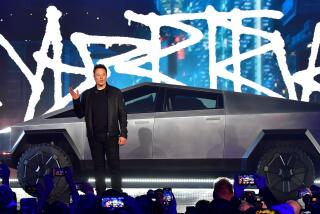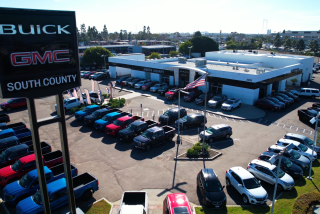GM Latin America unit still rides high
SAO CAETANO DO SUL, BRAZIL — At its bankruptcy filing last June, General Motors Corp. announced drastic cutbacks in its domestic and international operations but kept its South American subsidiary off the auction block.
In a recent interview at the regional headquarters here of what is now General Motors Co., GM-Mercosur President Jaime Ardila explained why. Simply put, he said GM’s Brazil operation, the company’s third-largest after those in the U.S. and China, is the company’s “most valuable asset” in profitability and growth potential.
Despite the global crisis and a 25% decline in U.S. sales that GM projects in 2009, GM-Brazil’s car and light-truck sales are expected to grow 8% this year, said the 54-year-old Colombia native, who has been with GM for 24 years.
Moreover, Ardila said, the region offers a template for what GM should do “to get the business right” by reducing models, forming a more flexible workforce and gaining concessions from dealers and suppliers.
--
Amid downsizing and a sell-off of assets to survive, why did GM see Latin America as essential to its future?
Over 85 years of presence in Latin America, GM’s operation has been the most successful unit in growth, market share, return on investment and profitability. Those are good reasons to keep it. It would have been suicidal for GM to part with its most valuable asset.
--
You say the Latin American operation is a role model for GM’s future. How so?
We have always operated in Brazil basically with one brand, Chevrolet. It made it easy for us to build the strength of the brand over time. Chevrolet is a household name in South America and the eighth-most-valued brand in Brazil.
Second, we operate with tremendous flexibility. Increases and reductions of production of 30% or 40% are not unusual; they are part of everyday life. We have a fixed cost structure that is easy to roll back when tough times arrive and to grow when good times come. The percentage of temporary workers on our payroll is 30% to 40% in Brazil and over 50% in the Andean countries.
Third, we have worked so closely with dealers and suppliers in the region that we really operate as one team. In tough times, we have been able to reduce dealer margins and they have accepted it for limited times. Our most important dealers sell exclusively Chevrolet as their only brand, so they are part of the family. When dealers sell many brands as in the U.S. and Europe, it’s harder to create a loyalty.
Finally, we have established exactly the right manufacturing footprint. In small markets such as the Andean region, we have plants that just do assembly. In bigger markets like Brazil, we have fully integrated manufacturing companies.
In the States, GM established a huge fixed structure with too many plants and labor agreements that were very inflexible.
--
How do Brazil’s growth prospects look?
We are convinced that Brazil is one of three or four emerging countries that will provide most of the growth for the industry for the next 10 years. Vehicle density, or number of cars per 1,000 people, remains very low in Brazil, approximately 150 cars per 1,000 people. In the U.S. it’s 500 cars per 1,000 people.
Secondly, demographics are very favorable. This is a very young population, with a high percentage of people under 35 years of age. Those people are potential customers as they grow and join in economic activity. Purchasing power is going up because economic times are good.
Finally, the most important element is credit. This is a business that moves on credit. Credit until two or three years ago was fairly unavailable. It was hard for lower-income people to finance a car. That’s changed now. Interest rates are coming down because of sound macroeconomic policy. That combination creates huge potential.
--
How has the GM bankruptcy affected your operation?
Our concern was the spillover effect on the customer because of the image issue. It created concern in the minds of a lot of customers about buying a Chevrolet. But because of the strength of the brand and our special relationship with dealers, exactly the opposite happened. In June, the month GM filed for Chapter 11, we sold 58,816 units, the largest monthly total ever.
--
You got help from the government?
Yes; the government reduced sales taxes on cars. Customers saw a 7% price reduction. It helped the industry, it helped Brazil’s economy, and it benefited us. September may turn out to be another record month. For 2009, the industry is looking at selling a record 3 million units, and for GM we believe we will be close to a record 600,000 units.
--
GM now equips every Brazilian car it makes with a flex-fuel engine that runs on a combination of ethanol and gasoline. But in the U.S. the emphasis is all on electric cars. Why?
The U.S. doesn’t have the ethanol distribution network, something Brazil has been building since 1973, when the government mandated that all gas stations have pumps for ethanol. The technology exists in the U.S.: GM alone has 2 million cars running in the U.S. that use ethanol. The problem is, customers don’t have enough fuel stations to fill their tanks. There are only 2,000 stations nationwide that can distribute ethanol, mainly in the Midwest, and that’s nothing in a country that size.
--
So no future for ethanol in the U.S. car market?
Eventually in the U.S. the technologies will coexist. One change will come with the launch of electric vehicles like our Chevrolet Volt electric model next year but also with the change in ethanol technology. Ethanol in Brazil is produced from sugar cane and in the U.S. from corn. But there are too many issues associated with extracting ethanol only from corn, such as the impact on food prices, the fact it uses too much water and that it is too expensive in relation to gasoline.
We are working on producing ethanol from cellulose -- from waste -- and once we have this, I think ethanol in the U.S. and other countries will be propelled to a totally new level because it will be much cheaper.
--
GM just opened a $100-million technology center here and hired 1,000 engineers to staff it. What effect will it have on the U.S. market?
It was developed as part of GM’s new global strategy for product development. We defined five centers of expertise -- the U.S., Germany, [South] Korea, Australia and Brazil -- to develop global car architecture. We are developing a mid-size pickup [truck] code-named GMI-700 that will be sold in the U.S. and globally in 2010 or 2011.
Brazil will also help the U.S. with development of small cars, and it could help the U.S. with flex-fuel development. As part of that, we have about 20 Brazilian engineers in Michigan now helping with ethanol-related technology for the U.S. and other countries.
--
The Brazilian currency is 50% stronger against the dollar over the last year. What effect is it having on car exports this year?
Dramatic. Our exports will come down from 85,000 units last year (none to the U.S.) to probably 35,000 this year because Brazilian-manufactured exports are less competitive. The industry exported 700,000 units last year, and this year it will be lucky to export 400,000. So it’s a big fall for GM and the industry. With Brazil about to become a major oil exporter, the trend could continue. That’s a cloud on Brazil’s horizon.






